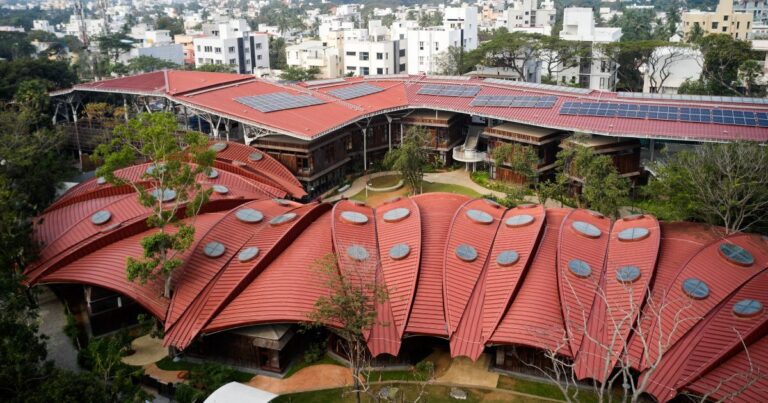Construction defects can significantly affect the quality, safety, and longevity of buildings, whether newly constructed or repurposed. Understanding the diagnosis and treatment of construction defects is crucial, especially when issues may manifest as water leaks, drafty windows, cracked balconies, loose flooring, or mould growth. While some may assume these problems stem from design flaws, they are most often caused by improper construction practices, substandard materials, or poor workmanship.
Early diagnosis is crucial to identifying the root cause and implementing effective corrective measures. This is typically achieved through a comprehensive physical condition survey conducted by qualified engineering or architectural professionals. This article outlines what a condition survey entails, how it is carried out, the most common types of construction defects, and recommended remediation strategies.

What Is a Physical Condition Survey?
A physical condition survey is a technical assessment aimed at identifying structural and system-related deficiencies in a building. The goal is to evaluate the current state of major components, determine the causes of any damage or deterioration, and recommend appropriate repair solutions.
The survey typically covers the following building systems:
- Structural concrete and steel elements
- Roof and exterior envelope
- Windows and doors
- Electrical and mechanical systems
- Plumbing and drainage networks
- Interior walls and flooring
How Is the Survey Conducted?
The process involves several key stages:
- Preliminary Visual Inspection : A general assessment of both interior and exterior areas to identify visible signs of damage or wear.
- Non-Destructive Field Testing : Use of tools such as moisture meters, thermal imaging cameras, and concrete strength tests to assess material integrity without causing damage.
- Sampling for Laboratory Analysis (if necessary) : Collection of material samples for detailed testing to verify compliance with specifications.
- Data Interpretation and Reporting : Preparation of a comprehensive report including photographs, analysis of findings, repair recommendations, and estimated timelines.

Common Types of Construction Defects
| Type of Defect | Common Causes | Detection Methods |
|---|---|---|
| Water Leaks | Improper waterproofing, aging seals, or poor flashing | Visual inspection, water spray tests |
| Cracks in Structure | Poor soil compaction, settlement, or faulty concrete pouring | Crack mapping, depth measurement |
| Electrical Issues | Substandard wiring or improper installation | Circuit testing, panel inspection |
| Mold and Moisture | Water infiltration or inadequate ventilation | Humidity readings, visual inspection |
| Flooring Damage | Low-quality materials or improper installation | Load testing, adhesion checks |
How to Remediate Construction Defects
Effective remediation depends on the type and severity of the defect. General steps include:
- Removal of damaged or defective materials (e.g., mold-infested drywall)
- Replacement with compliant, high-quality materials
- Repair of affected structures using certified methods
- Application of protective layers such as waterproofing membranes
- Post-repair testing to ensure durability and functionality

Frequently Asked Questions (FAQ)
1. Can I detect construction defects myself?
Some defects like cracks or leaks are visible, but accurate diagnosis requires professional expertise and specialized equipment.
2. When should a condition survey be performed?
Ideally before taking possession of a new building, or when noticeable changes in the building’s physical condition occur.
3. How long does a condition survey take?
Typically one to three days, depending on the size and complexity of the structure.
4. Are repairs permanent?
Repairs are long-lasting if done with compliant materials and by qualified professionals.

Summary Table of Key Points
| Aspect | Details |
|---|---|
| Purpose of Survey | Diagnose construction defects and determine root causes |
| Systems Inspected | Structure, roof, windows, MEP systems, flooring |
| Common Defects | Leaks, cracks, mold, electrical faults, poor installation |
| Detection Methods | Visual inspection, field testing, lab analysis |
| Remediation Steps | Removal, replacement, repair, protection, post-testing |


ArchUp Opinion
While physical condition surveys are an essential tool for diagnosing construction defects, they address symptoms rather than the underlying causes—primarily weak oversight during the construction phase. Many projects suffer from recurring issues due to insufficient quality control and lack of clear performance standards for contractors.
Moreover, such assessments should not be limited to newly built structures. Periodic inspections should be standard practice for existing buildings, especially those exposed to harsh environmental conditions or prone to rapid degradation.
There is a growing need for a more transparent and quality-focused construction culture that enforces strict compliance with building codes and ensures accountability across all project stakeholders.
Construction Defects Diagnosis Treatment







